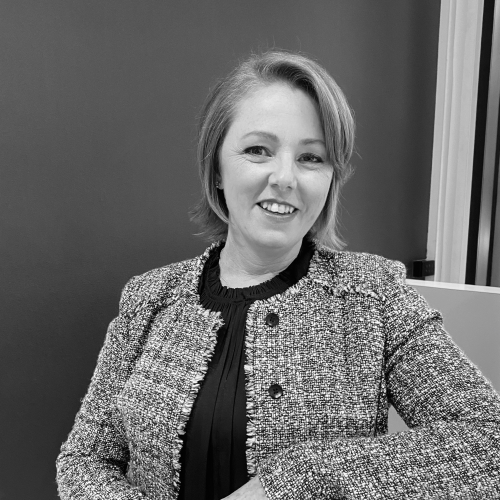All Australian businesses lie somewhere on a ‘philanthropy continuum’ that stretches from true altruistic intention at one end to expedient tax incentives at the other.
While individual motivations and how they choose to participate are rightfully varied, what often unites most businesses is a sense of being overwhelmed by a crowded charitable landscape and the choice of giving vehicles.
It’s an understandable conundrum, given that two major forces are colliding in a powerful way at the Australian philanthropic intersection, pushing more businesses to consider their social responsibilities.
First, there’s the growing social need, evidenced by the burgeoning 55,000 tax concession charities (which has doubled since 1990) and the mounting divide between rich and poor, often shrouded in a two-speed economy.
The second is more encouraging – the emergence of more professional services, formal tools and programs, as well as an impending charity commission and online charity portal, all of which are particularly useful for the SME business community. This force is decluttering and demystifying the landscape, allowing companies to get on with their core business and rely on a growing pool of experts to strengthen their philanthropic output.“
Most SMEs simply do not have the resources to dedicate a staff member to their philanthropy, and, even if they do, it can be difficult for that person to fully understand the intricacies of philanthropy and of working with the community sector,” says Vanessa Meachen, research and policy director with peak body Philanthropy Australia.“
While Private Ancillary Funds (PAFs) are appealing, community foundations [independent philanthropic organisations working in a specific geographic area] make excellent partners for businesses that wish to make an impact within a specific geographic region. They are also generally very knowledgeable about the issues faced in that region and are best placed to help.”
This sentiment around collaborating with industry experts is also shared by Melbourne-based multidiscipline advisory practice Morrows, whose philanthropy division is partnering with one of the country’s most experienced teams, Australian Philanthropic Services, to offer tailored solutions for their private and business clients.“
While some of our clients establish private foundations or PAFs, there are concerns as to the relative level of cost and compliance, so some clients are also considering community foundations and cause-specific public funds,” says Morrows principal and director Alistair Hamblin.“
We still prefer the flexibility of PAFs; however, there needs to be a significant contribution of funds at the outset for it to be practical.” (Some say $500,000 to $1 million to gain true benefit, whereas sub-funds with a public fund can start at around $20,000.)
So, who gives?
SMEs have long been the backbone of business philanthropy in Australia. A lack of rich and relevant data plagues the philanthropic sector in general, so it takes a return to 2002 to find the evidence that SMEs provide higher cash donations than their larger corporate counterparts (from Australian Bureau of Statistics survey Generosity of Australian Businesses).
Back further in 2000, the Council of Small Business Australia (COSBOA) found that two thirds of small businesses surveyed supported the community and “small firms give over $1.1 billion in cash and $2 billion in kind to community organisations”.
One of the most recent in-depth analyses of business, the 2005 Giving Australia report, looked at donations, sponsorships and community projects involving 2,705 businesses across Australia during the 2003/04 year. The total value of business giving was $3.3 billion – given by 67 per cent (or 529,900) of Australian businesses. The breakdown of giving showed 68 per cent in monetary donations, 16 per cent in goods and 16 per cent in services.
Some of today’s stand-out SME leaders, who all have in-house managers for their public or private foundation, include iconic travel company Intrepid Travel, which matches dollar-for-dollar contributions from its travellers (up to $400,000 per year) through Intrepid Foundation, and since 2002 has donated more than $3 million to 50 causes around the world.
Another is rising software star Atlassian and its foundation, which adopts a popular ‘percentage model’, committing 1 per cent of annual revenue, employee time and company equity to its foundation and charity partners. It has donated $2.2 million to charity, along with 21,940 non-profit licences ($2.24 million in value) and since 2009 has partnered with Room to Read to help improve the lives of 70,000 children and 830 women globally through various education programs.
Another best-practice foundation is home delivery food business Aussie Farmers Direct, which launched its own public ancillary fund in 2010, meaning (like Intrepid Foundation) it has a legal obligation to fundraise – a popular structure for businesses wanting to engage their customer base in giving activities. In its first year of grant making in 2011, the company awarded eight organisations grants totalling $256,000.
Payroll giving booms
Another powerhouse in philanthropy today is workplace giving. Otherwise labelled ‘pre-tax payroll giving’, the concept celebrated its 10th birthday in Australia in 2012 with significant findings.ATO figures from June 2012 (comparing FY10 to FY11) revealed a 34 per cent increase in total donations (excluding employer matching), from $28 million to $37.5 million, a 19.5 per cent increase in the number of employers involved and a 56.5 per cent increase in the number of employee donors.
Workplace giving champions The Australian Charities Fund and Charities Aid Foundation have helped hundreds of employers set up programs over the past 13 years, resulting in more than $190 million in donations to the community sector.Both groups have long promoted the notion that if 10 per cent of working Australians made a payroll charity donation of $5 each week, it would generate $260 million for the Australian community each year, providing a more reliable income stream for charities and greatly reducing their fundraising and administrative costs.
Back to basics
Whether it’s through a direct community partnership, creation of a sub-fund with a public fund or community foundation, or establishing your own private foundation, Meachen reminds businesses that clear priorities will lead to a greater level of satisfaction and social impact.
“It’s important to define the business values clearly and find a strategy that aligns with them,” she says.
“It’s just as important to ensure you are realistic about the needs of the community in which you intend to make a difference and the potential you have to make an impact, given the resources and knowledge you have access to.
“Talking to your business stakeholders is very important, as is identifying the concerns of the community and how they feel you could best be helping. Community foundations can be very useful sources of information and knowledge here, as can the community organisations that may be potential recipients of your grants.”
(This first appeared in Public Accountant magazine)



















